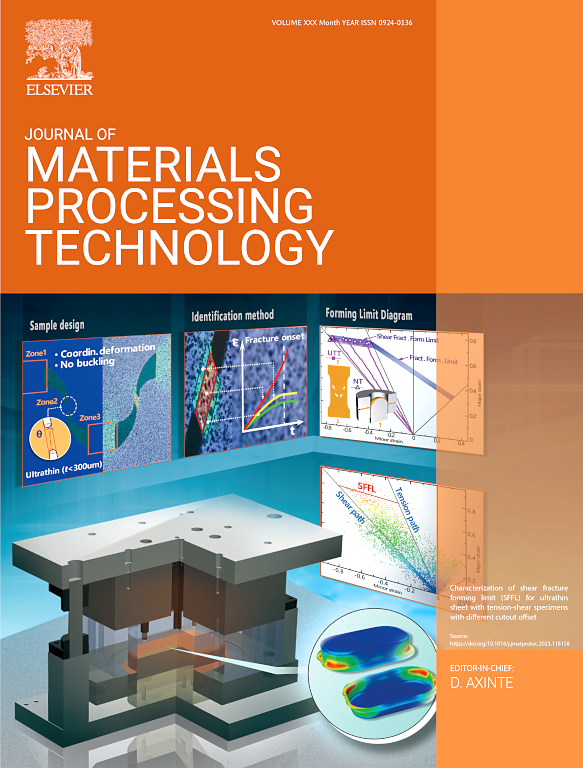Localized heating assisted laser shock peening without coating enhances mechanical properties of Ti6Al4V alloys
IF 6.7
2区 材料科学
Q1 ENGINEERING, INDUSTRIAL
Journal of Materials Processing Technology
Pub Date : 2025-02-01
DOI:10.1016/j.jmatprotec.2024.118681
引用次数: 0
Abstract
Room-temperature laser shock peening without coating (RT-LSPwoC) is the mainstream method for surface strengthening, yet it induces tensile residual stress on the surface during rapid heating and cooling. Warm LSPwoC, combining the benefits of dynamic strain aging and LSPwoC, exhibits higher performance than RT-LSPwoC. However, overall high-temperature is time- and resource-consuming, and it is prone to causing thermal stress relaxation during processing, making it unsuitable for large-scale applications. In this paper, a novel localized heating assisted LSPwoC (LHA-LSPwoC) method, utilizing a continuous wave laser for local heating, is proposed. Additionally, the deep physics-informed neural network model, embedded with physical formulas, is designed for process optimization. It enables rapid and accurate responses for an extensive number of cases (40 cases with an average deviation below 1 %), overcoming the drawbacks of traditional numerical simulations that are time-consuming and difficult to efficiently handle numerous cases. Compared to RT-LSPwoC, LHA-LSPwoC samples have higher dislocation density and higher grain refinement, demonstrating higher hardness and residual stress, particularly superior fatigue performance. The mechanism of LHA-LSPwoC is discussed, and thermally coupled finite element simulations and molecular dynamics calculations are conducted to provide theoretical support. The proposed method is cost-effective and flexible, showing outstanding potential for industrial applications.
求助全文
约1分钟内获得全文
求助全文
来源期刊

Journal of Materials Processing Technology
工程技术-材料科学:综合
CiteScore
12.60
自引率
4.80%
发文量
403
审稿时长
29 days
期刊介绍:
The Journal of Materials Processing Technology covers the processing techniques used in manufacturing components from metals and other materials. The journal aims to publish full research papers of original, significant and rigorous work and so to contribute to increased production efficiency and improved component performance.
Areas of interest to the journal include:
• Casting, forming and machining
• Additive processing and joining technologies
• The evolution of material properties under the specific conditions met in manufacturing processes
• Surface engineering when it relates specifically to a manufacturing process
• Design and behavior of equipment and tools.
 求助内容:
求助内容: 应助结果提醒方式:
应助结果提醒方式:


